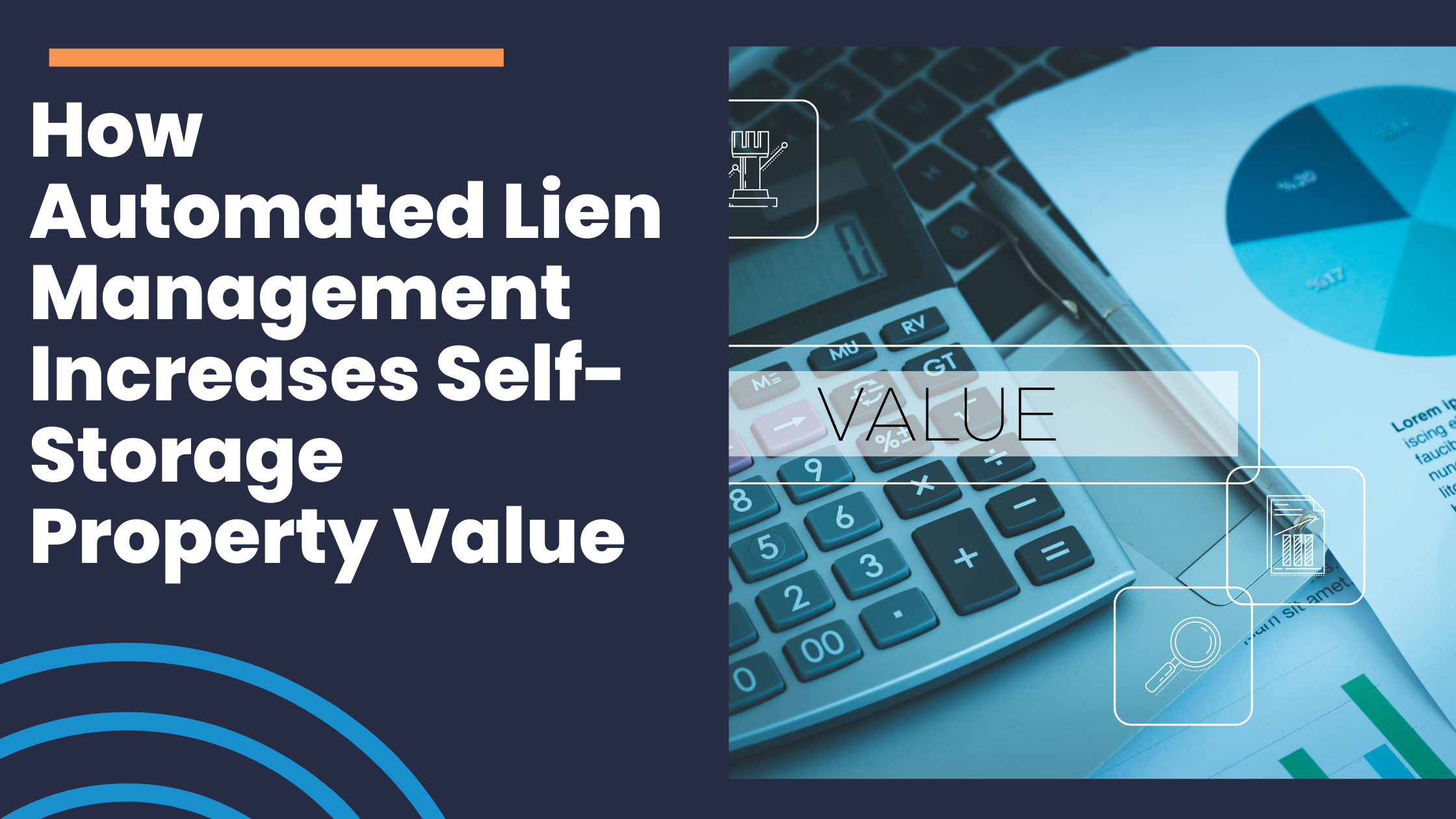How Automated Lien Management Increases Self-Storage Property Value
In the self-storage industry, property valuation is typically calculated using a multiple of Net Operating Income (NOI).
It's a straightforward formula: higher NOI equals higher property value.
While many operators focus on raising rental rates or occupancy to boost NOI, there's another powerful lever that's often overlooked: efficient lien management.
The Direct Connection Between Lien Management and Property Value
Self-storage facilities are valued primarily based on their income potential.
Most buyers use cap rates to determine value, with the standard formula being:
Property Value = NOI ÷ Cap Rate
When buyers evaluate a facility, they're not just looking at current income—they're scrutinizing operational efficiency and risk factors. This is where automated lien management creates tangible value.
Three Ways Automation Drives Higher Valuations
1. Reducing Bad Debt Write-offs
When tenants fail to pay, it directly impacts your bottom line.
According to industry data, self-storage facilities with automated lien management systems typically reduce their accounts receivable over 90 days by up to 95%.
Let's consider a hypothetical example:
Facility A: Manual Lien Management
500 units with $100 average monthly rent
5% of accounts are consistently delinquent
Annual revenue loss: $30,000
Facility B: Automated Lien Management
500 units with $100 average monthly rent
1% of accounts are consistently delinquent
Annual revenue loss: $6,000
The $24,000 annual NOI improvement for Facility B, at a 6% cap rate, adds $400,000 to the property value.
2. Reducing Labor Costs
Lien management is labor-intensive when handled manually. Staff must track delinquent tenants, send notices, verify compliance with state laws, and handle the auction process.
Research shows that facilities using automated lien management save approximately 500 hours of staff time per month across a portfolio.
For context, that's equivalent to one full-time employee for a medium-sized operator.
Another hypothetical example:
Facility C: Manual Process
20 hours per week spent on lien management
$18/hour loaded labor cost
Annual labor cost: $18,720
Facility D: Automated Process
5 hours per week spent on lien management
$18/hour loaded labor cost
Annual labor cost: $4,680
The $14,040 annual NOI improvement for Facility D, at a 6% cap rate, adds $234,000 to the property value.
3. Reducing Legal Risk and Ensuring Compliance
Perhaps the most significant value-add from automation is risk reduction.
Self-storage lien laws vary by state and are constantly changing. Non-compliance can lead to costly lawsuits.
A single wrongful sale lawsuit can cost between $25,000 and $100,000 in legal fees and settlements, not to mention reputational damage.
Buyers recognize this risk during due diligence.
Properties with robust, automated compliance systems command higher valuations because they represent lower operational risk.
While difficult to quantify precisely, industry professionals recognize that robust, automated compliance systems can positively impact cap rates by reducing operational risk—a key factor in how properties are valued.
Real-World Impact
Storage operators who have implemented automated lien management consistently report significant improvements in their operations and valuations.
One case study from Storage Star showed that automated lien management helped them reduce their accounts receivable from $1M to $120K in just 90 days in one of their markets.
“Working with Ai Lean has given Storage Star a competitive advantage. When more units are occupied by paying tenants, our prices can be lower, which makes customer acquisition easier.”
Beyond the Numbers: Additional Valuation Benefits
Sophisticated buyers also value:
Data Visibility & Transparency: Automated systems provide clear reporting and analytics on delinquency trends
Scalability: Systems that can efficiently manage multiple properties as portfolios grow
Operational Consistency: Standardized processes that work across different markets
Making the Case to Potential Buyers
When preparing to sell a self-storage facility, operators with automated lien management have compelling data to share with potential buyers:
Documented reduction in delinquency rates
Detailed compliance records showing risk mitigation
Labor efficiency metrics showing operational improvements
Trends showing consistent improvement in collections
The ROI of Implementation
For operators considering an exit in the next 2-5 years, implementing automated lien management typically delivers ROI well before the sale. The combined benefits of reduced delinquency, labor savings, and risk mitigation often pay for themselves within months.
Conclusion
In an increasingly competitive self-storage market, smart operators are looking beyond traditional value drivers like occupancy and rental rates. Automated lien management represents one of the most impactful operational improvements available today.
By reducing bad debt, cutting labor costs, and mitigating legal risk, automation directly improves NOI and enhances buyer confidence—resulting in materially higher property valuations. For operators looking to maximize value before a sale, addressing lien management inefficiencies should be at the top of the priority list.
Ready to Transform Your Lien Process?
The Time is Now!
Take the First Step Toward Automation Today.
Download the Lien Process Automation Readiness Checklist to assess whether your business is ready to streamline operations and improve compliance.
Continue Reading









